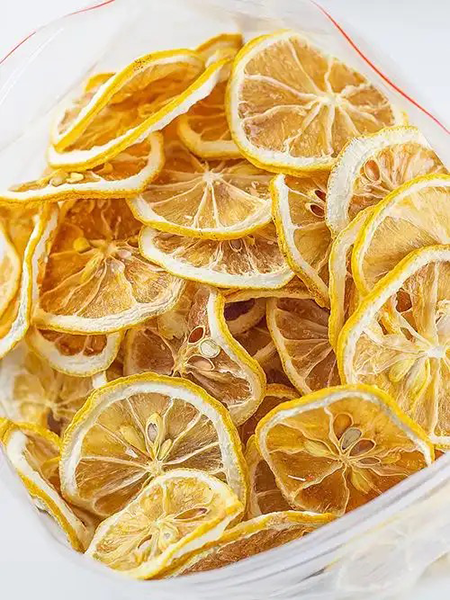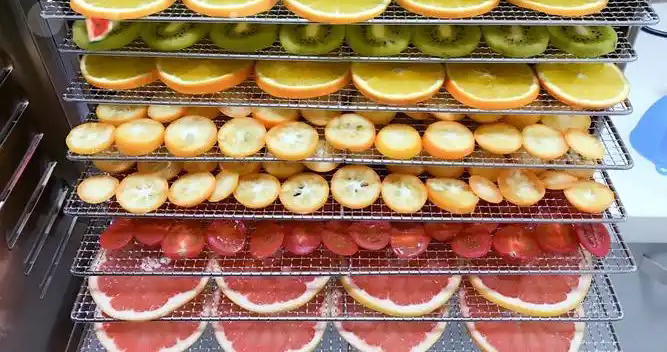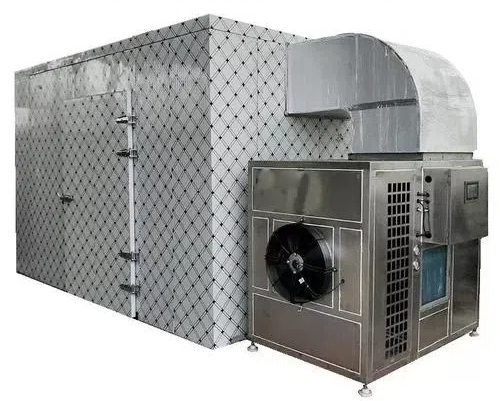
Content Menu
● Understanding Food Drying
>> Importance of Drying in Food Preservation
● What Are Heat Pump Dryers?
>> Advantages of Heat Pump Dryers
● What Are Vented Dryers?
>> Advantages of Vented Dryers
● Heat Pump Vs Vented Dryer Performance Comparison
● Factors Influencing Your Choice
● Case Studies
>> Case Study 1: Fruit Drying with Heat Pump Technology
>> Case Study 2: Vegetable Drying with Vented Technology
● Innovations in Dryer Technology
● Economic Considerations
>> Operating Costs
>> Return on Investment (ROI)
● Conclusion
● FAQ
>> 1. What is the main difference between heat pump and vented dryers?
>> 2. Are heat pump dryers more energy-efficient than vented dryers?
>> 3. Can I use a vented dryer for all types of food?
>> 4. How do I maintain my dryer?
>> 5. What should I consider when choosing a dryer for my business?
In the realm of food processing, drying is a critical step that significantly impacts the quality, shelf life, and flavor of food products. As a leading manufacturer of food dryers in China, our company specializes in providing OEM services for international brands, wholesalers, and producers. This article will explore the differences between heat pump dryers and vented dryers, focusing on their performance, efficiency, and suitability for food drying applications.

Understanding Food Drying
Food drying is a method of preserving food by removing moisture content. This process inhibits the growth of bacteria, yeasts, and molds that can spoil food. Various drying methods exist, including sun drying, air drying, and mechanical drying using specialized equipment like heat pump dryers and vented dryers.
Importance of Drying in Food Preservation
The primary goal of food drying is to extend the shelf life of products while maintaining their nutritional value and flavor. By reducing moisture content to around 20% or less, dried foods can be stored for months or even years without refrigeration. This preservation method is crucial for various industries, including:
- Snack Foods: Dried fruits and vegetables are popular snacks that retain essential nutrients.
- Herbs and Spices: Drying enhances flavors and extends the usability of culinary herbs.
- Meat Products: Jerky production relies heavily on effective drying techniques to prevent spoilage.
What Are Heat Pump Dryers?
Heat pump dryers utilize a refrigeration cycle to extract moisture from food products. They are equipped with a heat exchanger that circulates air through the drying chamber. The process involves:
- Evaporation: Moist air is drawn from the drying chamber and passed over a cold evaporator coil, where moisture condenses.
- Heat Recovery: The extracted moisture is then heated and returned to the chamber to continue the drying process.
- Energy Efficiency: Heat pump dryers are known for their energy efficiency as they recycle heat during the drying process.
Advantages of Heat Pump Dryers
- Energy Efficiency: They consume less energy compared to traditional dryers due to their ability to recycle heat.
- Gentle Drying: The low-temperature drying process helps retain the nutritional value and flavor of food.
- Versatility: Suitable for a wide range of food products, including fruits, vegetables, meats, and herbs.
- Environmentally Friendly: Reduced energy consumption leads to lower carbon emissions.
- Consistent Quality: The controlled environment ensures uniform drying results across batches.
What Are Vented Dryers?
Vented dryers operate on a different principle. They use hot air to evaporate moisture from food products but expel this moist air outside. The process involves:
- Heating Element: A heating element warms the air before it enters the drying chamber.
- Air Circulation: A fan circulates the hot air through the chamber to dry the food.
- Exhaust System: Moist air is vented outside, requiring proper installation to ensure effective operation.

Advantages of Vented Dryers
- Faster Drying Times: Vented dryers can achieve higher temperatures, leading to quicker drying times.
- Lower Initial Cost: Generally less expensive than heat pump dryers, making them accessible for smaller operations.
- Simplicity: Easier to operate with straightforward controls, making them user-friendly for various skill levels.
Heat Pump Vs Vented Dryer Performance Comparison
To better understand which dryer offers superior performance for food applications, we can compare key factors:
| Feature | Heat Pump Dryer | Vented Dryer |
| Energy Efficiency | High | Moderate |
| Drying Temperature | Low (gentle) | High (rapid) |
| Drying Time | Longer | Shorter |
| Nutrient Retention | Excellent | Moderate |
| Initial Cost | Higher | Lower |
| Maintenance | Requires professional servicing | Easier maintenance |
Factors Influencing Your Choice
When deciding between heat pump and vented dryers for food processing, consider the following factors:
- Type of Food: Delicate foods like herbs may benefit from heat pump technology due to lower temperatures that preserve volatile compounds.
- Volume of Production: For large-scale operations requiring quick turnaround times, vented dryers may be preferred due to their faster processing capabilities.
- Energy Costs: Evaluate local energy costs; heat pump dryers may offer savings in regions with high electricity prices due to their efficiency.
- Environmental Impact: If sustainability is a priority for your business model, heat pump dryers are more eco-friendly due to lower energy consumption and emissions.
Case Studies
Case Study 1: Fruit Drying with Heat Pump Technology
A fruit processing company adopted heat pump technology for drying apples. The results showed:
- Retained color and flavor due to gentle drying temperatures.
- Reduced energy costs by 30% compared to previous methods using conventional vented systems.
This transition not only improved product quality but also enhanced customer satisfaction as consumers noticed better taste and texture in dried apple slices.
Case Study 2: Vegetable Drying with Vented Technology
A vegetable processor used a vented dryer for carrots. The outcomes included:
- Faster processing time allowed them to meet increasing market demand.
- While there was a slight loss in nutrient quality compared to heat pump methods, the overall efficiency outweighed this concern for their target market focused on cost-effective solutions.
Innovations in Dryer Technology
The field of dryer technology is continually evolving. Recent advancements include:
- Smart Controls: Modern dryers now come equipped with smart technology that allows operators to monitor temperature and humidity levels remotely. This ensures optimal conditions are maintained throughout the drying process.
- Hybrid Systems: Some manufacturers are developing hybrid systems that combine both heat pump and vented technologies. These systems can switch between modes depending on product type and desired outcomes, offering flexibility in production lines.
Economic Considerations
When investing in either type of dryer, businesses must consider not only the initial purchase price but also long-term operational costs.
Operating Costs
Heat pump dryers may have higher upfront costs but typically result in lower operating expenses over time due to reduced energy consumption. In contrast:
- Vented dryers may be cheaper initially but can incur higher energy bills if used extensively or inefficiently over time.
Return on Investment (ROI)
Calculating ROI involves assessing how quickly a new dryer will pay for itself through savings on energy bills and increased production efficiency. Businesses should conduct thorough cost analyses before making a decision.
Conclusion
Choosing between heat pump and vented dryers ultimately depends on specific operational needs and product types. Heat pump dryers excel in energy efficiency and gentle drying processes that preserve nutritional quality. In contrast, vented dryers offer faster drying times at a lower initial cost but may compromise some quality aspects.
As a manufacturer specializing in food dryers, we encourage potential clients to assess their requirements carefully before making a decision. Investing in the right technology can lead to significant improvements in product quality and operational efficiency while aligning with business goals related to sustainability and cost management.

FAQ
1. What is the main difference between heat pump and vented dryers?
Heat pump dryers recycle heat for efficient low-temperature drying while vented dryers expel moist air outside at higher temperatures for quicker results.
2. Are heat pump dryers more energy-efficient than vented dryers?
Yes, heat pump dryers are generally more energy-efficient due to their ability to recycle heat during the drying process.
3. Can I use a vented dryer for all types of food?
While vented dryers can be used for many foods, they may not be suitable for delicate items that require gentle drying processes like herbs or certain fruits.
4. How do I maintain my dryer?
Heat pump dryers often require professional servicing due to their complex systems; however, regular cleaning of filters is essential for both types of dryers to ensure optimal performance.
5. What should I consider when choosing a dryer for my business?
Consider factors such as type of food being dried, production volume needs, energy costs in your area, desired product quality outcomes, and your commitment to sustainability when selecting a dryer.












